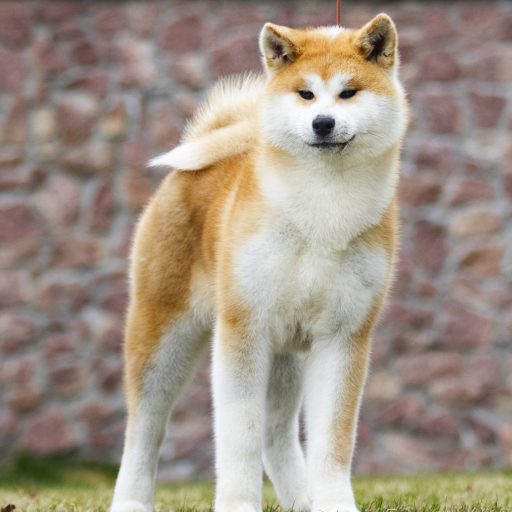After having practically disappeared, the Coucou de Rennes hen is developing again today thanks to the Club National des Eleveurs de Volailles de Races Bretonnes. She is a hen full of quality and particularly pretty, with her speckled plumage. Good incubator and good layer, her beautiful feathers are very soft, just like her character.
Physical peculiarities
The Coucou de Rennes has a strong neck and a relatively thin head. Its eggs are a minimum size of 60 g, cream-colored tending to red.
Plumage: bluish grey, a so-called cuckoo plumage for this color variation (black feathers speckled with white) reminiscent of that of the gray cuckoo. The rooster is lighter than the hen. Their feathers are silky and abundant, very tight, glued to the body.
Eyes: orange-red.
Beak: quite thin and short, it is light beige in color, similar to a horn.
Crest: simple, red.
Chest: broad and well developed.
Mumps: red.
Tarsi: they are clear and rather thick, of medium length. Pinkish white in color, sometimes speckled with gray brown.
Behavior and character
Easygoing, the Coucou de Rennes quickly feels at home. It is a very docile hen that coexists easily with all farmyard animals.
A lover of wide open spaces, this Breton chick can however quickly become restless, even quarrelsome, if she finds herself cramped. She is therefore a hen to be favored if you have enough space for her to feel free to move.
Feed
As a good rustic, the Coucou de Rennes is satisfied with simple food. Prefer crushed cereals (wheat, corn, barley, rapeseed, sunflower) which will be more suitable than conventional pellets for layers. These cereals make up about 75% of their food, the rest can be gleaned directly by your hen (grass, insects, worms, etc.) in the garden, but you can also give them peelings or other leftovers which they will enjoy. You should also know that some traditional breeders go so far as to give whey to the Coucous de Rennes, legend has it that it gives flavor to the eggs.
Reproduction
The Coucou de Rennes is a slow-growing hen, which is one of the reasons that almost caused its loss. She begins to lay eggs at 6 months and is therefore not fertile before. On the contrary, she is a pretty good incubator who will give birth to beautiful cuckoo chicks if you also have a rooster. In addition, the Club National des Éleveurs de Volailles et de Races Bretonnes, whose mission is to safeguard the Coucou de Rennes, encourages amateur breeding, and provides the breeders of their club with technical support. It also organizes a competition and the sale of breeders.
Health
Its slow growth allows the Coucou de Rennes to have better bases to live a long time. It is a rustic and resistant hen that will not make you spend your time at the vet. These qualities do not mean that you can ignore the treatments necessary for the good health of your hen. Deworm your hens once a year, or throughout the year with a course of natural products (garlic, vinegar, diatomaceous earth). You can also have her vaccinated to protect her from some common diseases in hens such as coccidiosis, typhosis or Marek’s disease.
Place of life
The Coucou de Rennes is, as its name suggests, of Breton origin, so it adapts without problem to regions with a humid climate and even windy conditions, which is rare enough in hens to be noted. Professional breeders allocate a minimum of 10 m2 per hen, so it is strongly advised to leave the Coucou de Rennes enough space outside to go about its business easily. She is not a big thief, there is no need to install a protective net over the entire surface that you make available to her, simple barriers at least 1m20 high will do the trick to avoid an unfortunate jump.
For the chicken coop, so much space is not necessary, a classic enclosure with nesting box and nest box will be perfect. There are kit versions, but of course you can build it yourself. The important thing is that your hens are protected from the sun during the summer as well as from the cold during the winter.
Breed History
The Coucou de Rennes breed was developed in 1880 in the Brittany region, around Rennes (Ille-et-Vilaine) by Doctor Ramé and was immediately acclaimed by Breton breeders. Its standard will be approved on March 31, 1914. This poultry was particularly appreciated on the Rennes markets at the end of the 19th and the beginning of the 20th century, but it was almost extinct in the 1950s, as breeders favored other more productive breeds and growing faster.
In 1988, on the initiative of Jean Luc Maillard, the Écomusée du Pays de Rennes decided to save and rehabilitate












